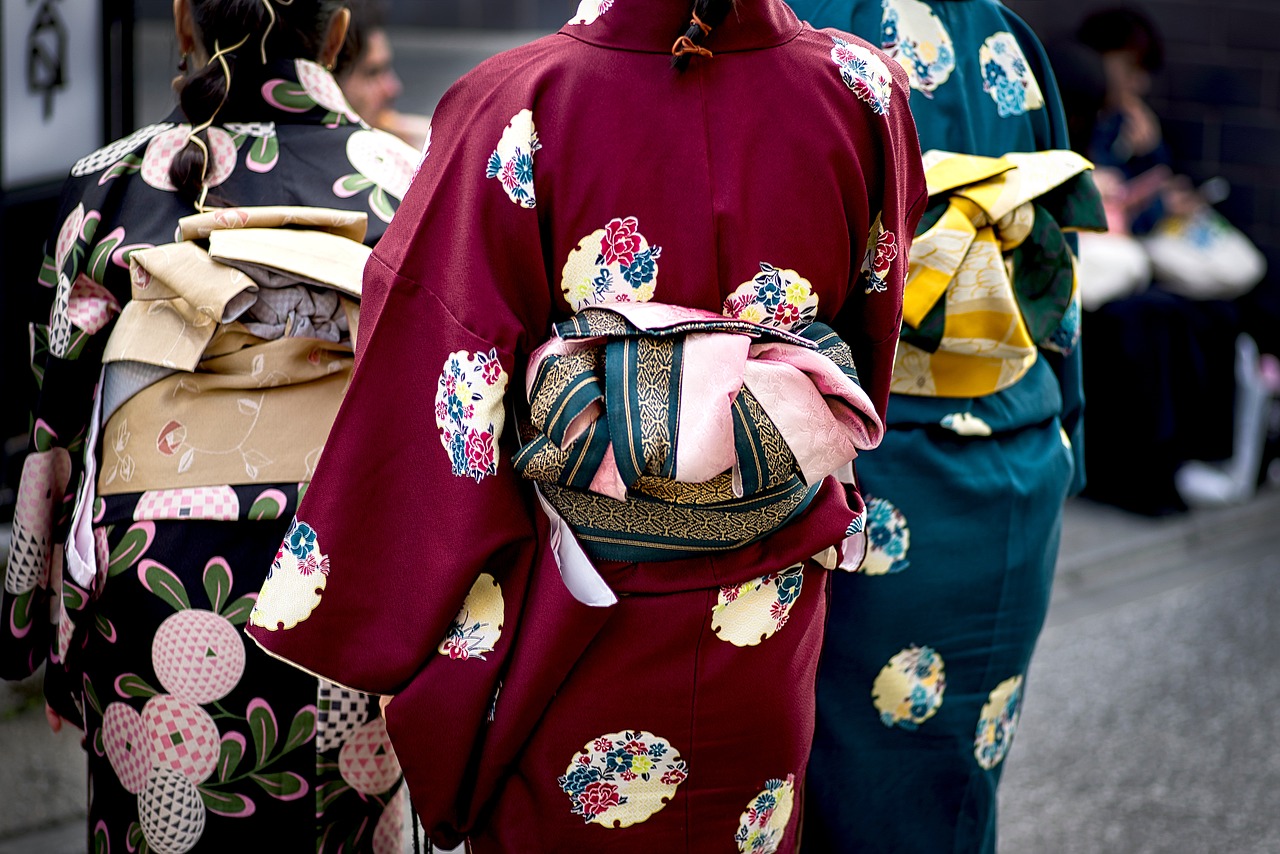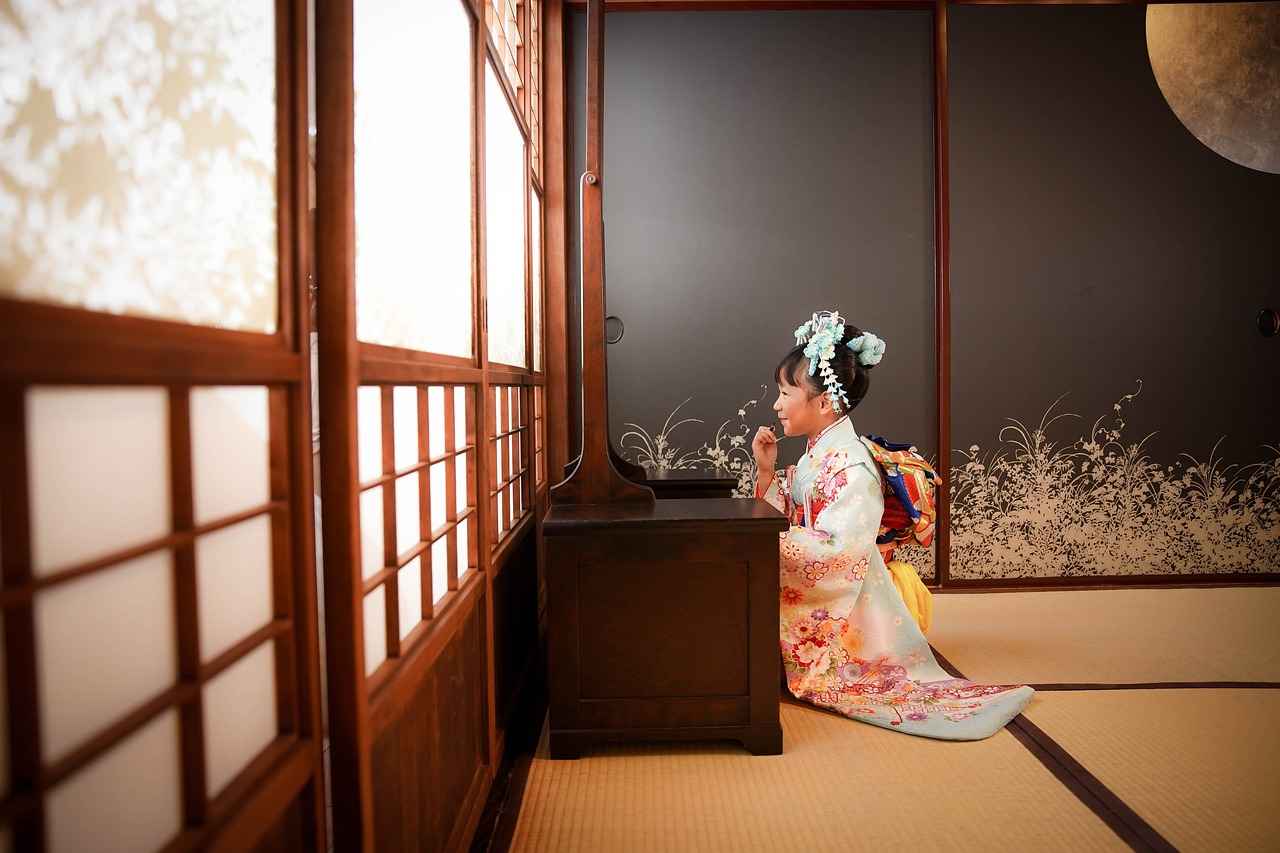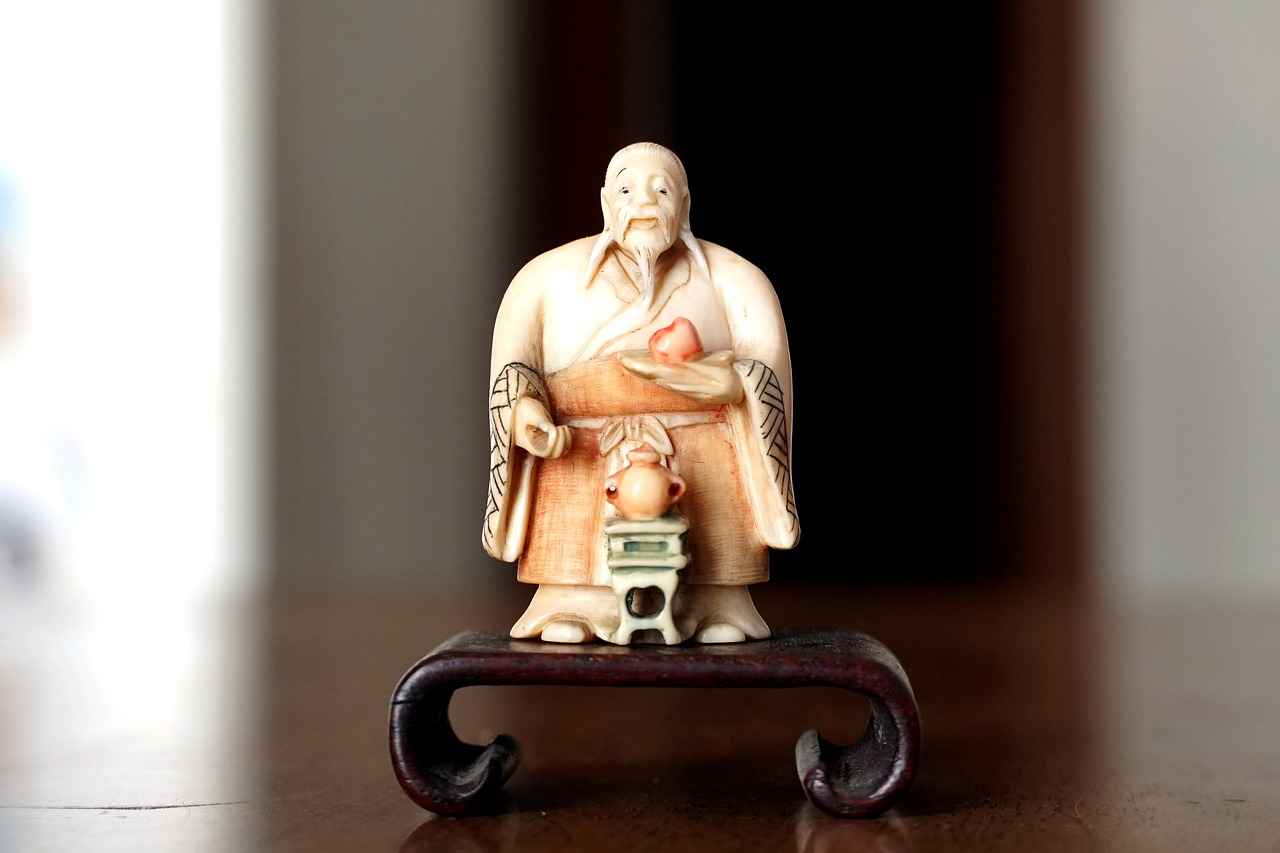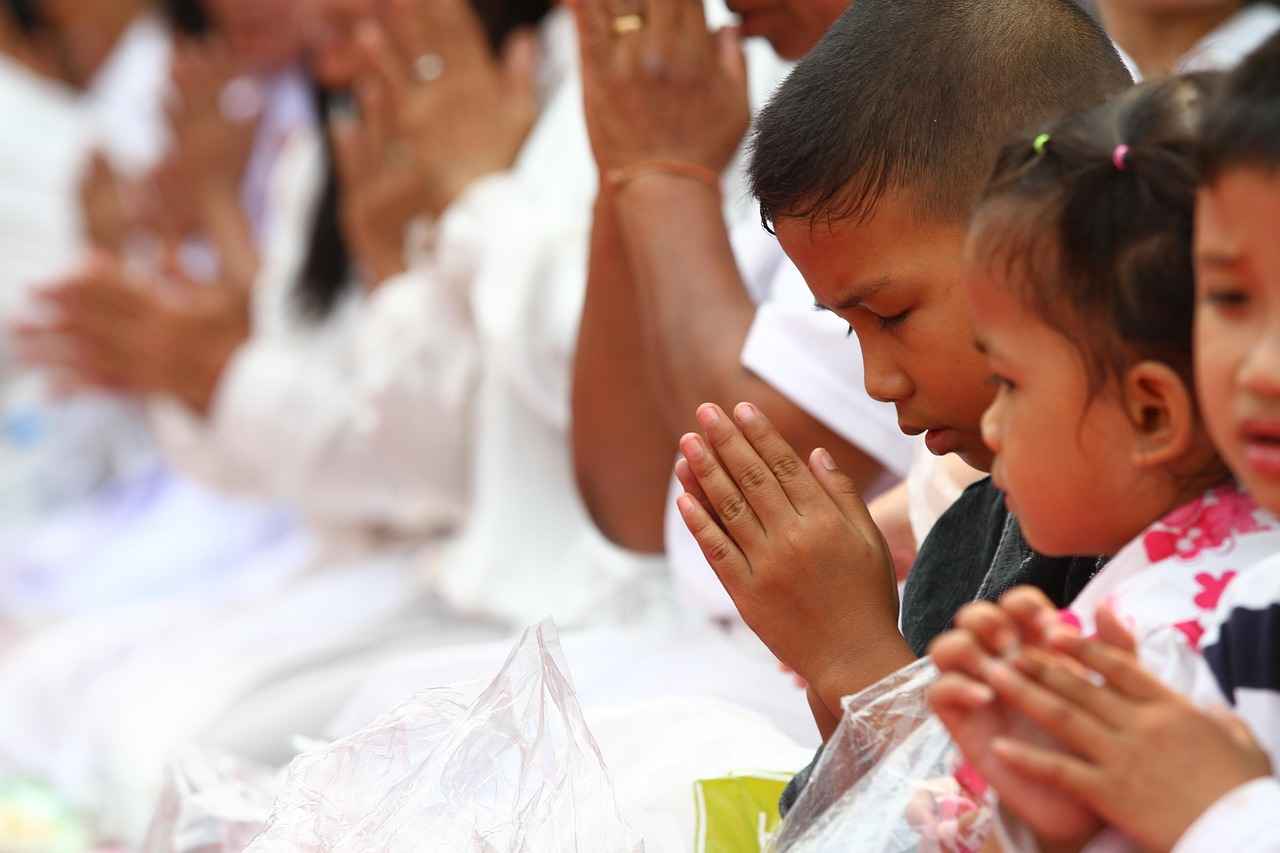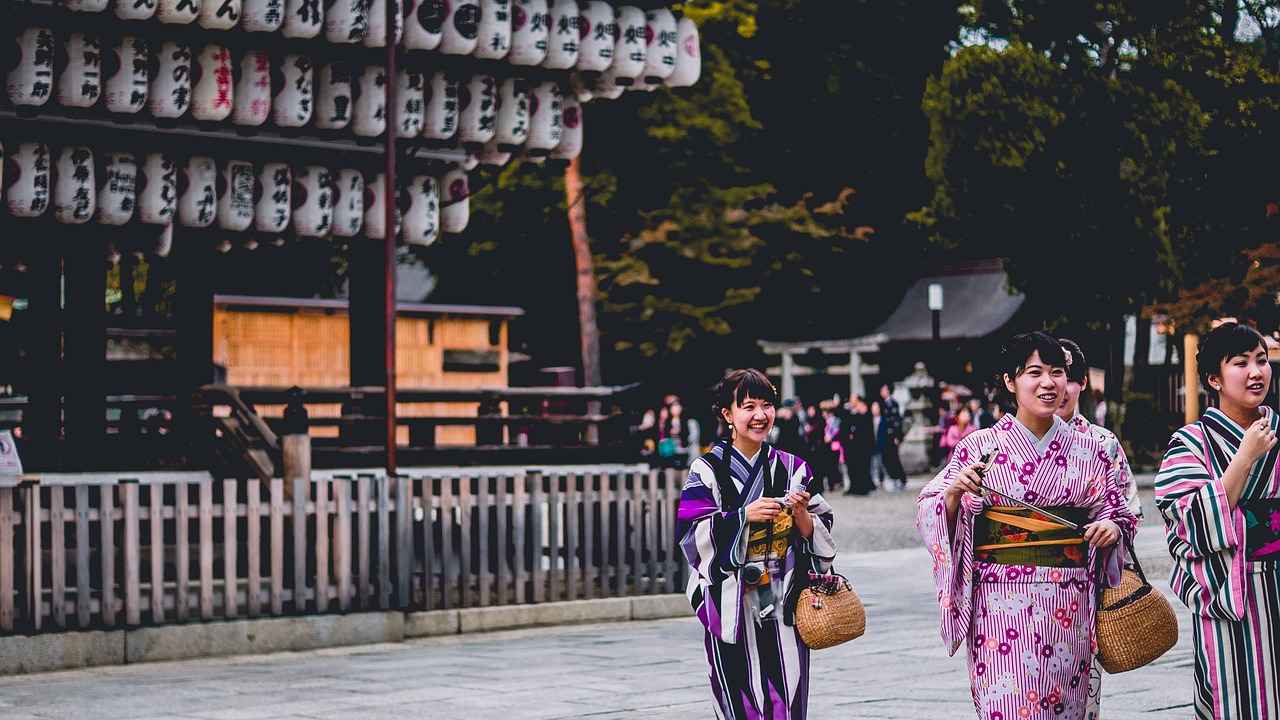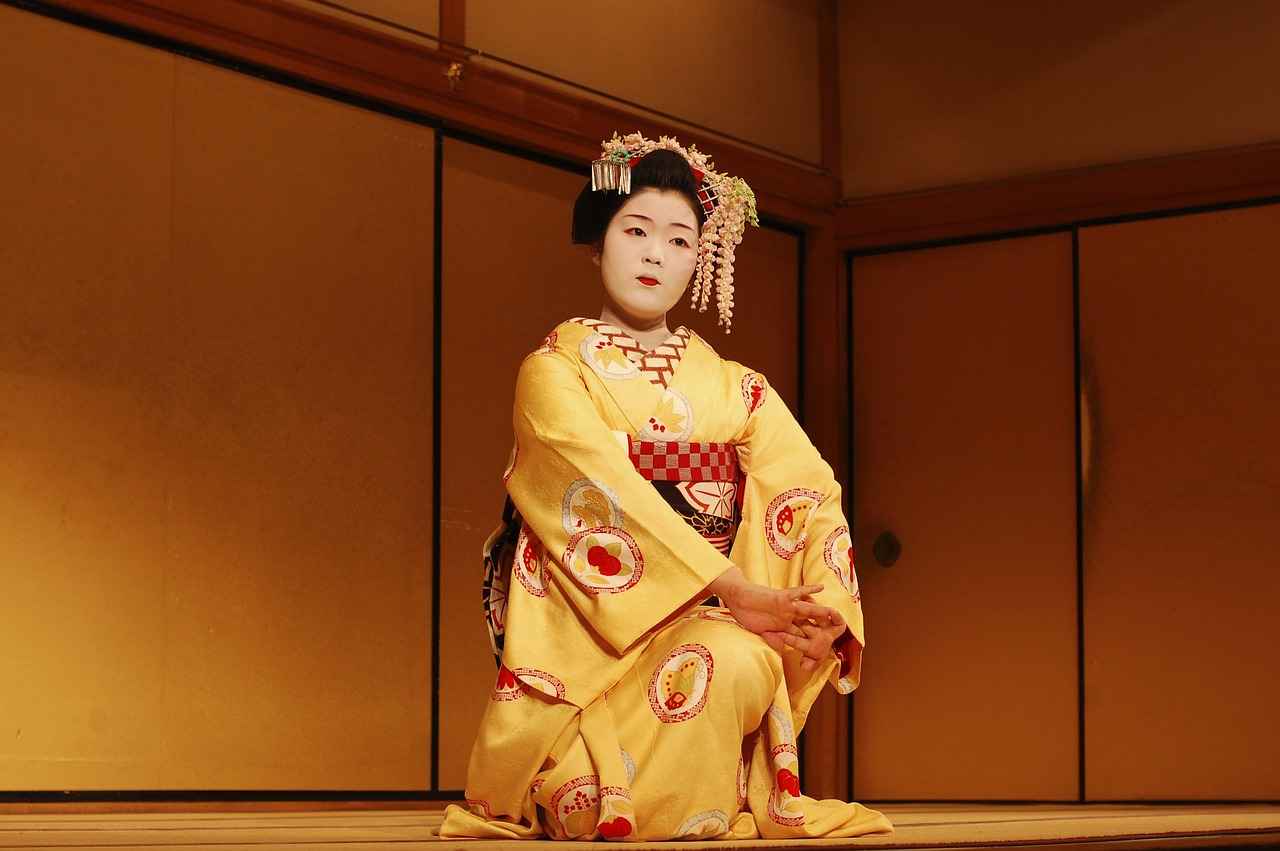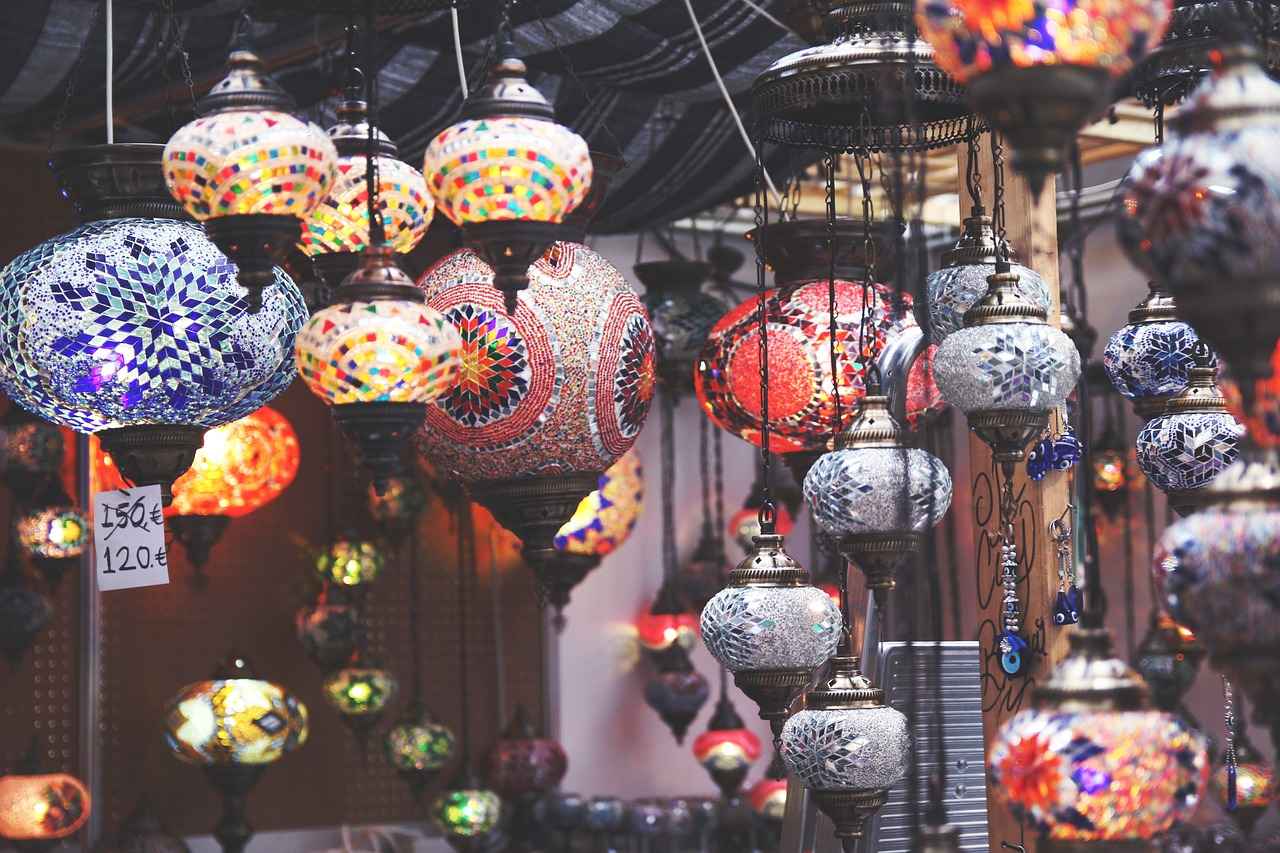This article delves into the rich history, various styles, and cultural significance of traditional Japanese kimonos, providing beginners with essential knowledge and insights to appreciate this iconic garment.
What is a Kimono?
A kimono is a traditional Japanese garment known for its long sleeves and wrap-around design. Typically made from silk, kimonos feature intricate patterns that reflect the cultural heritage of Japan.
History of Kimonos
The kimono boasts a long and storied history, evolving from ancient clothing styles into a symbol of Japanese culture. Understanding its origins enhances appreciation for its significance in contemporary society.
- Early Origins: Kimonos trace their roots back to the Heian period (794-1185), influenced by Chinese fashion.
- Heian Period Styles: Characterized by elaborate designs and layering techniques, these early garments held aesthetic and cultural importance.
- Influence of the Samurai: The samurai class introduced practical elements and styles reflecting their status, shaping the evolution of kimonos.
Modern Adaptations
In contemporary Japan, kimonos have adapted to modern fashion trends while retaining traditional elements. They are worn on various occasions, maintaining their cultural significance.
Types of Kimonos
Different types of kimonos are designed for specific occasions and seasons:
- Formal Kimonos: Such as the furisode and tomesode, worn during weddings and ceremonies.
- Casual Kimonos: Including the yukata, typically worn in relaxed settings during summer festivals.
Kimono Fabrics and Patterns
The fabric and patterns of kimonos play a crucial role in their aesthetic appeal:
- Traditional Fabrics: Silk is the most common, but cotton and synthetic fibers are also popular.
- Symbolic Patterns: Patterns often carry meanings, reflecting nature, seasons, or personal stories.
How to Wear a Kimono
Wearing a kimono correctly requires understanding its components:
- Essential Components: A kimono consists of several parts, including the obi (belt) and various accessories.
- Wearing Techniques: Properly tying the obi and arranging the kimono is essential for achieving the perfect look.
Kimono Care and Maintenance
To preserve their beauty, kimonos require proper care:
- Cleaning Methods: Delicate cleaning methods such as hand washing or professional services are recommended.
- Storage Tips: Proper storage prevents wrinkles and fabric deterioration, maintaining quality and appearance.
The Cultural Significance of Kimonos
Kimonos embody Japanese culture and tradition, playing integral roles in ceremonies and festivals:
- Kimonos in Ceremonies: Essential in traditional practices like tea ceremonies and weddings.
- Festivals and Celebrations: Worn during festivals to celebrate cultural heritage and community.
Conclusion: Embracing the Kimono Culture
Understanding the history, types, and significance of kimonos allows individuals to fully appreciate this traditional garment. By embracing kimono culture, one can connect with Japan’s rich heritage and artistry.

What is a Kimono?
A Beginner’s Guide to Traditional Japanese Kimonos
This article explores the rich history, styles, and cultural significance of traditional Japanese kimonos, providing beginners with essential knowledge and insights to appreciate this iconic garment.
A kimono is a traditional Japanese garment that is easily recognized by its long sleeves and wrap-around design. Typically crafted from luxurious silk, kimonos are adorned with intricate patterns that often reflect the rich tapestry of Japan’s cultural heritage. These garments are not just clothing; they symbolize a deep connection to Japanese history and customs.
Traditionally, kimonos are worn with an obi, a wide belt that secures the garment in place. The way a kimono is tied and styled can vary significantly based on the occasion, season, and the wearer’s age or status. This flexibility allows kimonos to be worn in a variety of settings, from formal ceremonies to casual outings.
Over the centuries, the kimono has evolved, integrating various influences while still maintaining its traditional essence. The fabric choices, colors, and patterns often change with the seasons, celebrating nature and cultural festivals. For example, floral designs may be favored in spring, while more subdued colors might be chosen for winter.
In modern Japan, kimonos are still worn during important life events such as weddings, tea ceremonies, and festivals. They serve as a reminder of the past while also adapting to contemporary fashion trends. Wearing a kimono today can be seen as a way to honor Japanese tradition and artistry.
In conclusion, understanding what a kimono is goes beyond its physical appearance. It encompasses the traditions, craftsmanship, and cultural significance that have been passed down through generations, making it a timeless symbol of Japanese identity.
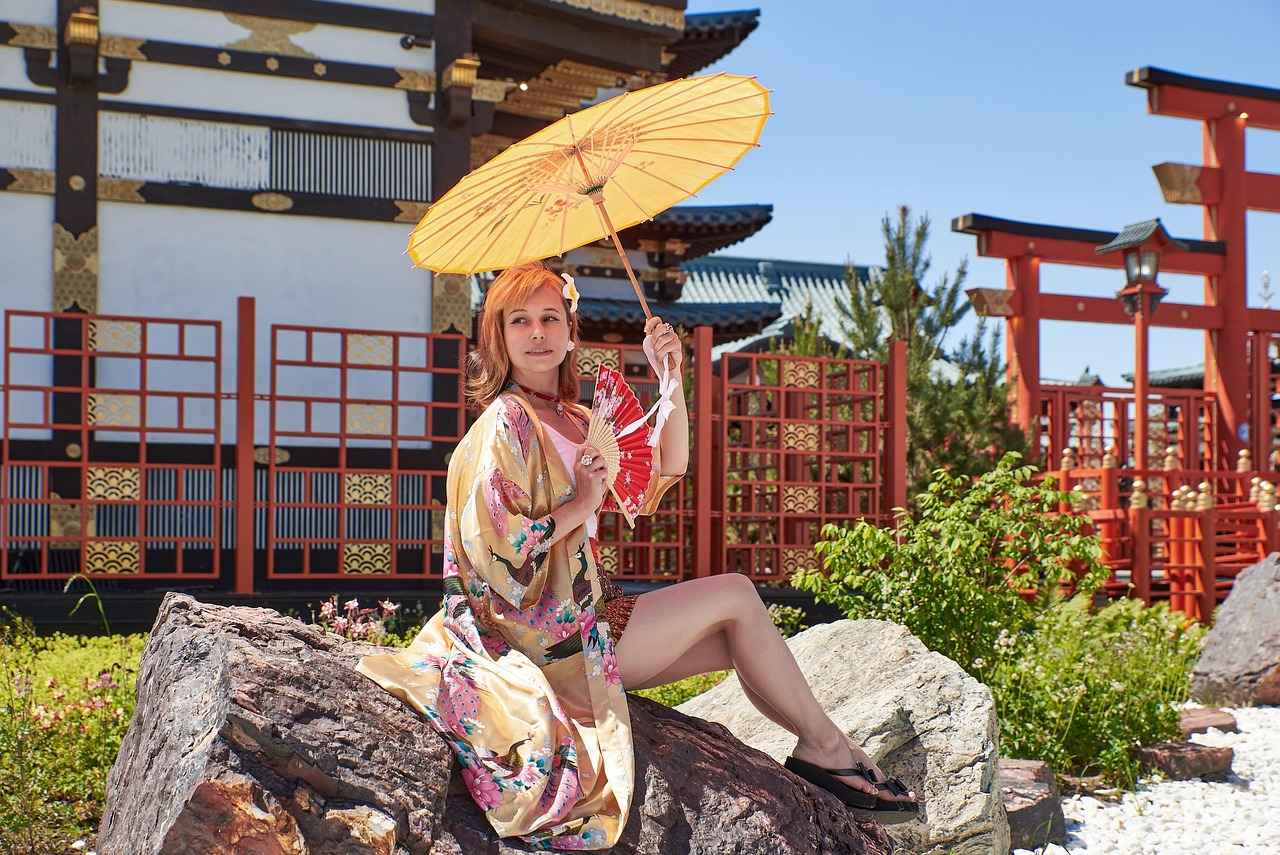
History of Kimonos
The kimono is not just a piece of clothing; it is a representation of Japan’s rich cultural tapestry and historical evolution. Understanding the provides valuable insights into their significance in contemporary society.
The origins of the kimono can be traced back to the Heian period (794-1185), a time when Japan was heavily influenced by Chinese clothing styles. Initially, kimonos were simple garments, but over the centuries, they evolved into intricate works of art, featuring elaborate patterns and vibrant colors that reflect the changing seasons and cultural values.
During the Heian period, kimonos were characterized by their layering techniques and luxurious fabrics. The aristocracy wore kimonos made from silk, adorned with beautiful embroidery and dyeing techniques, which signified their social status. As the samurai class emerged, they contributed to the evolution of kimonos by introducing practical designs that emphasized functionality without sacrificing aesthetics.
In the modern era, kimonos have undergone significant transformations. While they retain their traditional essence, contemporary designers have adapted kimonos to fit modern fashion trends. Today, kimonos are worn not only during formal occasions such as weddings and tea ceremonies but also in casual settings, showcasing their versatility.
Understanding the enriches our appreciation for this iconic garment. It serves as a bridge connecting Japan’s past to its present, embodying the nation’s artistic heritage and cultural identity. As we embrace the kimono culture, we celebrate not just a garment, but a living tradition that continues to evolve.
Early Origins
The kimono is a garment steeped in history, with its roots tracing back to the Heian period (794-1185). During this era, Japan was significantly influenced by Chinese fashion, leading to the development of the early kimono styles that we recognize today. This section delves into the fascinating evolution of kimonos, examining the styles and materials that shaped their early existence.
Initially, kimonos were crafted from simple fabrics, often using silk imported from China. The intricate designs and vibrant colors were not just for aesthetic appeal; they also reflected the social status of the wearer. As the Heian period progressed, the layering of garments became a popular trend, with multiple layers worn to signify elegance and sophistication.
During this time, the kimono’s structure began to take shape. The wrap-around design allowed for ease of movement, which was essential for daily activities. Additionally, the use of natural dyes and hand-painted motifs became prominent, showcasing the artistry involved in kimono-making. Common motifs included floral patterns, scenes from nature, and seasonal themes, which added a personal touch to each garment.
As the kimono evolved, it became a reflection of Japanese culture and identity. The garments were not merely clothing; they represented a deep connection to tradition and heritage. The early styles laid the groundwork for the diverse range of kimonos we see today, each telling a story of its own.
In conclusion, the early origins of the kimono highlight its transformation from a simple garment influenced by foreign fashion to a complex symbol of Japanese culture. Understanding this history allows us to appreciate the significance of kimonos in contemporary society.
Heian Period Styles
During the Heian period (794-1185), Japanese kimonos underwent significant transformations, reflecting the cultural and aesthetic values of the time. This era is renowned for its intricate designs and innovative layering techniques, which not only showcased the wearer’s status but also conveyed deep cultural meanings.
The kimonos from this period were typically made from luxurious fabrics such as silk, adorned with elaborate patterns and vibrant colors. The use of multiple layers, known as obijime, allowed for a dynamic display of color and texture, enhancing the visual appeal of the garment. These layers were carefully chosen to reflect the season and occasion, demonstrating a profound connection to nature and the changing environment.
- Layering Techniques: The layering of kimonos during the Heian period was not merely for warmth; it was a form of artistic expression. Each layer could be a different color or pattern, creating a harmonious blend that highlighted the beauty of the garment.
- Symbolism: Patterns often featured motifs from nature, such as flowers and animals, symbolizing various aspects of life and seasons. For instance, cherry blossoms represented the transient beauty of life, while cranes symbolized longevity.
- Social Status: The complexity of a kimono’s design could indicate the wearer’s social standing. Nobility often wore more elaborate and colorful garments, while commoners had simpler designs.
In addition to aesthetics, the kimono served as a canvas for storytelling. The choice of patterns and colors could convey personal narratives or family histories, making each garment unique. This rich tapestry of cultural significance and artistic expression made the kimono a vital part of Heian society.
In conclusion, the kimonos of the Heian period are more than just clothing; they are a reflection of a sophisticated culture that valued artistry, nature, and social hierarchy. Understanding these garments provides insight into Japan’s historical identity and the lasting legacy of its traditional attire.
Influence of the Samurai
The samurai class has profoundly influenced the evolution of traditional Japanese kimonos, intertwining their status, lifestyle, and cultural values with the design and functionality of this iconic garment. This section examines the various ways in which the samurai have shaped kimono styles and their significance in Japanese society.
Historically, the samurai were not just warriors; they were also cultural icons who embodied the principles of bushido, the way of the warrior. This philosophy emphasized honor, discipline, and aesthetics, which were reflected in their attire. As such, the kimonos worn by samurai were often more than mere clothing; they were a representation of their identity and values.
- Practical Elements: Samurai kimonos were designed with functionality in mind. Features such as shorter sleeves and looser fits allowed for ease of movement during combat and daily activities.
- Material Choices: The samurai favored durable fabrics like silk and cotton, which not only provided comfort but also showcased their wealth and social standing.
- Color and Design: The colors and patterns of a samurai’s kimono often indicated their clan affiliation and rank, with bold colors and intricate designs signifying higher status.
Moreover, the samurai’s influence extended to the obi, the belt worn with kimonos. The way in which the obi was tied and styled could convey various messages about the wearer’s social position and personal identity.
In conclusion, the samurai class played a pivotal role in shaping the kimono, embedding their values and lifestyle into its evolution. Today, the legacy of the samurai can still be seen in modern kimono designs, reminding us of the rich cultural heritage of Japan.
Modern Adaptations
In contemporary Japan, the kimono has undergone significant transformations, merging traditional craftsmanship with modern fashion sensibilities. Today, these iconic garments are not just relics of the past but are actively worn and celebrated in various settings, from casual outings to formal events.
One of the most notable adaptations is the incorporation of contemporary fabrics and designs. While traditional kimonos are often crafted from silk, many modern versions utilize lighter materials like cotton and synthetic blends, making them more accessible and comfortable for everyday wear. This shift allows individuals to enjoy the elegance of a kimono without the weight of historical fabrics, especially during warmer seasons.
Additionally, kimonos are now available in a variety of styles that cater to diverse tastes. Designers have introduced innovative cuts and patterns, appealing to younger generations who seek to express their individuality. For example, the yukata, a casual summer kimono, has become a popular choice for festivals and summer events, often featuring vibrant prints and playful designs.
Moreover, kimonos are increasingly worn in everyday life, not just during special occasions. Many people are embracing kimonos as a fashionable alternative to Western clothing, incorporating them into their daily wardrobes. This trend is further fueled by social media, where influencers showcase their unique kimono styles, inspiring others to adopt this traditional garment in modern contexts.
On significant occasions, such as weddings and tea ceremonies, kimonos remain a symbol of cultural heritage. However, even in these formal settings, there is a noticeable blend of traditional and modern elements. For instance, brides may choose to wear a fusion of traditional kimonos with contemporary accessories, creating a unique look that honors tradition while reflecting personal style.
In summary, the modern adaptations of kimonos illustrate a dynamic fusion of tradition and innovation. By embracing contemporary styles and fabrics, kimonos continue to thrive in Japanese culture, ensuring that this beautiful garment remains relevant and cherished across generations.

Types of Kimonos
When exploring the world of traditional Japanese kimonos, it is essential to understand the various available. Each type serves a unique purpose and is designed to be worn during specific occasions or seasons. Below, we categorize the main types of kimonos and highlight their distinctive features.
| Type of Kimono | Description | Occasions |
|---|---|---|
| Furisode | A formal kimono with long sleeves, typically worn by young, unmarried women. It is often brightly colored and elaborately designed. | Weddings, Coming-of-Age ceremonies |
| Tomesode | A formal kimono with shorter sleeves, usually worn by married women. It often features more subdued colors and patterns. | Formal events, weddings |
| Yukata | A casual summer kimono made of lightweight cotton, often worn at festivals and summer events. | Summer festivals, casual outings |
| Hifu | A sleeveless kimono often worn over other garments, providing warmth and style. | Casual wear, layered outfits |
| Komon | A casual kimono featuring all-over patterns, suitable for everyday wear. | Daily wear, informal gatherings |
Each type of kimono not only serves a practical purpose but also reflects the rich cultural heritage of Japan. Understanding these distinctions is vital for anyone looking to appreciate the beauty and significance of this traditional garment.
Formal Kimonos
, such as the furisode and tomesode, are exquisite garments that hold a significant place in Japanese culture, especially during important life events.
These kimonos are characterized by their elegant designs and are typically made from high-quality materials like silk, adorned with intricate patterns and vibrant colors. The furisode, recognized by its long, flowing sleeves, is traditionally worn by young, unmarried women during formal events, such as weddings and coming-of-age ceremonies. In contrast, the tomesode features shorter sleeves and is often worn by married women, symbolizing maturity and grace.
| Type of Kimono | Characteristics | Occasions |
|---|---|---|
| Furisode | Long sleeves, colorful designs | Weddings, Coming-of-age ceremonies |
| Tomesode | Shorter sleeves, more subdued colors | Weddings, Formal gatherings |
The choice of kimono often reflects the wearer’s status and the formality of the occasion. For instance, the tomesode is typically worn by the mother of the bride or groom, illustrating respect and honor during the ceremony. Additionally, the patterns and colors chosen for these kimonos can carry symbolic meanings, representing good fortune, happiness, or prosperity.
When attending a formal event, understanding the appropriate context for wearing these kimonos is essential. Dress codes in Japanese culture are deeply rooted in tradition, and wearing a kimono that aligns with the occasion demonstrates respect for the customs and practices of Japanese society.
In conclusion, formal kimonos like the furisode and tomesode are not just beautiful garments; they embody rich cultural significance and are integral to celebrating life’s milestones in Japan. By appreciating these kimonos, one can gain deeper insights into the values and traditions that shape Japanese culture.
Casual Kimonos
, including the yukata, are an essential part of Japanese fashion, particularly in relaxed settings. These garments are not only comfortable but also reflect the rich cultural heritage of Japan. In this section, we will explore the materials used for casual kimonos and the appropriate occasions for wearing them.
The yukata is a lightweight cotton kimono traditionally worn during the summer months. It is characterized by its simple design and vibrant colors, making it a popular choice for festivals and casual outings. Unlike formal kimonos, which are often made from luxurious fabrics like silk, yukatas are designed for comfort and ease of wear. They are typically adorned with colorful patterns that celebrate seasonal themes, such as cherry blossoms in spring or fireworks in summer.
Casual kimonos, including the yukata, are appropriate for a variety of settings. They are commonly worn at summer festivals, known as hanabi, where people gather to watch fireworks and enjoy traditional food stalls. Additionally, they can be worn at hot springs (onsen) and during casual family gatherings, offering a relaxed yet stylish option for dressing.
It is important to note that while yukatas are casual, there are various styles and patterns that can elevate the overall look. For example, pairing a yukata with a decorative obi (belt) or traditional footwear like geta can enhance its appearance and make it more suitable for semi-formal occasions.
In summary, casual kimonos like the yukata provide a comfortable and culturally rich option for relaxed settings. Their versatile nature allows wearers to enjoy traditional Japanese fashion while embracing the beauty of simplicity.
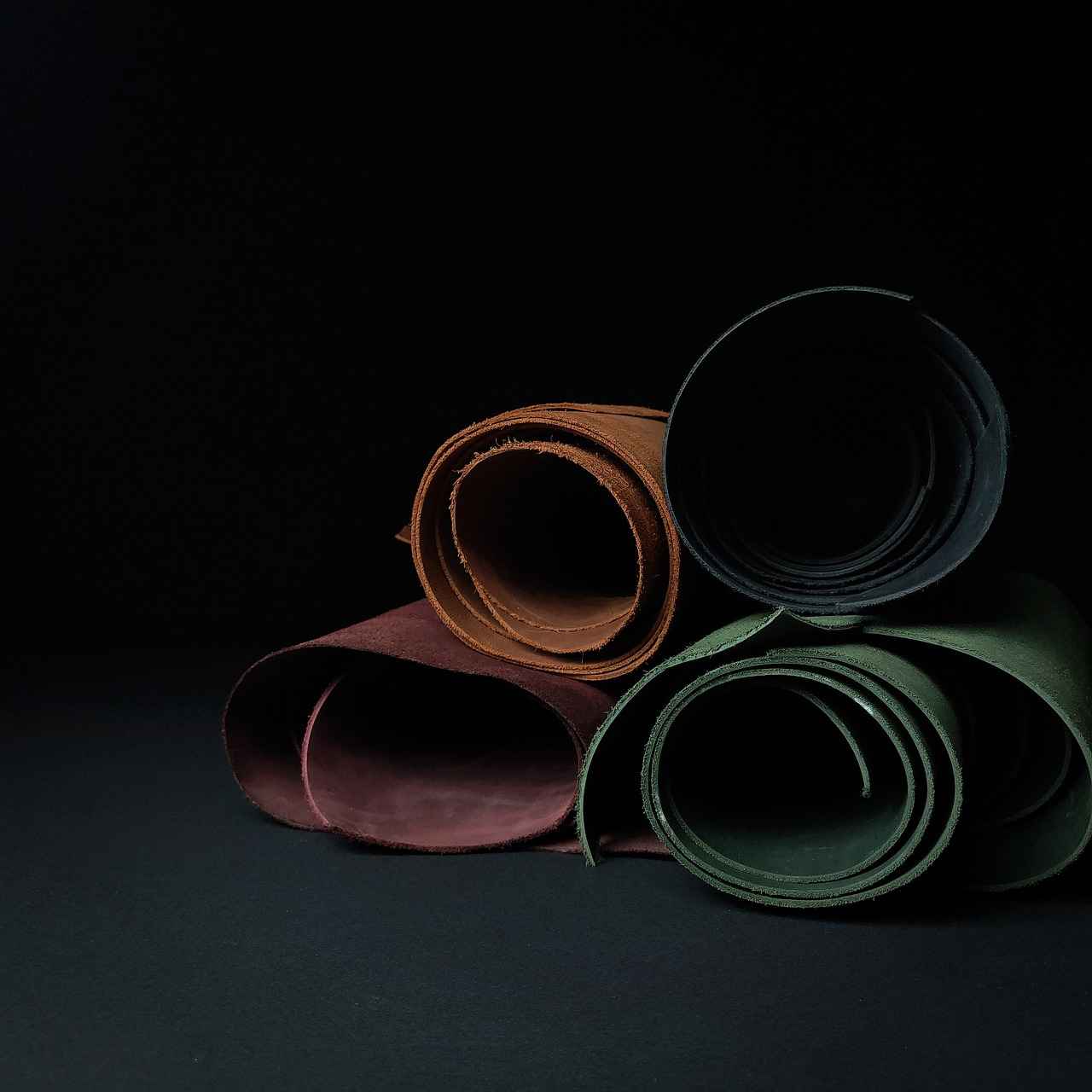
Kimono Fabrics and Patterns
The fabric and patterns of a kimono are not only fundamental to its aesthetic appeal but also carry deep cultural significance. This section delves into the various materials and designs that contribute to the beauty and meaning of kimonos, highlighting their role in Japanese heritage.
Kimonos are traditionally crafted from a variety of fabrics, with silk being the most esteemed. The luxurious texture and sheen of silk make it a preferred choice for formal occasions. However, other materials such as cotton and synthetic fibers are also prevalent, particularly in casual kimonos like the yukata. Each fabric type offers unique properties, influencing the kimono’s drape, comfort, and suitability for different seasons.
| Fabric Type | Characteristics | Common Uses |
|---|---|---|
| Silk | Soft, shiny, and luxurious | Formal kimonos, ceremonies |
| Cotton | Breathable and comfortable | Casual kimonos, summer festivals |
| Synthetic Fibers | Durable and easy to care for | Everyday wear, modern designs |
Beyond fabric, the patterns adorning kimonos are rich in symbolism and meaning. Common motifs include cherry blossoms, which represent the transient beauty of life, and cranes, symbolizing longevity and good fortune. These designs are often influenced by the seasons, with floral patterns in spring and more subdued colors in winter, reflecting the natural world.
- Asanoha: A hemp leaf pattern symbolizing growth and resilience.
- Seigaiha: Waves pattern representing peace and good luck.
- Kikkō: Tortoise shell pattern symbolizing longevity.
In conclusion, the choice of fabric and the intricacy of patterns in kimonos are essential elements that enhance their beauty and cultural significance. Understanding these aspects allows one to appreciate the artistry involved in kimono production and the stories they tell.
Traditional Fabrics
play a vital role in the creation and cultural significance of kimonos. While silk is the most renowned and traditional fabric used for kimonos, there is a diverse range of materials that contribute to this iconic garment’s beauty and functionality. This section delves into the properties and uses of various fabrics commonly found in kimono production.
| Fabric Type | Properties | Common Uses |
|---|---|---|
| Silk | Luxurious, smooth, and breathable; excellent drape | Formal kimonos, special occasions |
| Cotton | Soft, lightweight, and easy to care for; less formal | Casual kimonos, summer wear (yukata) |
| Synthetic Fibers | Durable, often wrinkle-resistant; versatile | Everyday wear, affordable options |
| Wool | Warm, thick, and insulating; heavier texture | Winter kimonos, outerwear |
The choice of fabric not only affects the appearance of a kimono but also its functionality. For instance, silk kimonos are often reserved for formal events due to their luxurious feel and intricate designs. In contrast, cotton kimonos like the yukata are favored during summer festivals for their comfort and breathability.
Furthermore, synthetic fibers have gained popularity in recent years, offering a more affordable and low-maintenance alternative to traditional fabrics. These materials often mimic the appearance of silk while providing greater durability and ease of care.
Understanding the properties and uses of these fabrics allows wearers to select the appropriate kimono for various occasions, ensuring both style and comfort. By appreciating the diverse materials that contribute to kimono culture, one can gain a deeper understanding of this beautiful garment’s significance in Japanese heritage.
Symbolic Patterns
in kimonos are not merely decorative; they are imbued with deep cultural significance, often reflecting nature, the seasons, or even personal narratives. Each motif serves as a visual language, conveying messages and emotions that resonate with the wearer and the observer alike.
For instance, the chrysanthemum pattern symbolizes nobility and longevity, often associated with the Japanese imperial family. Similarly, the pine tree represents strength and resilience, as it remains green throughout winter, symbolizing endurance. These natural motifs are not only beautiful but also serve as reminders of the values and ideals cherished in Japanese culture.
In addition to natural elements, kimonos often incorporate seasonal patterns. Cherry blossoms are a popular motif during spring, symbolizing the fleeting nature of life, while maple leaves are commonly found in autumn kimonos, representing the beauty of change. These seasonal designs allow wearers to express their connection to the changing world around them.
Moreover, some patterns carry personal stories or familial significance. For example, a kimono passed down through generations might feature a unique design that tells the story of the family’s history, celebrating their heritage and values. This personalization adds a layer of depth to the garment, making it a cherished possession.
The cultural implications of these motifs extend beyond aesthetics. They often play a role in ceremonies and special occasions, with specific patterns chosen to convey good fortune or to honor traditions. Understanding the meanings behind these patterns enriches the appreciation of kimonos, allowing wearers and admirers to connect with the rich tapestry of Japanese culture.
In conclusion, the symbolic patterns on kimonos are a vital aspect of their identity, reflecting both the natural world and personal narratives. Each design tells a story, making the kimono not just a garment, but a profound expression of culture and individuality.

How to Wear a Kimono
Wearing a kimono is an art that reflects the beauty and elegance of Japanese culture. To truly appreciate this traditional garment, it is essential to understand its components and the techniques involved in wearing it correctly. This guide provides a detailed, step-by-step approach to donning a kimono, ensuring that you not only look the part but also respect the cultural significance behind the attire.
| Component | Description |
|---|---|
| Kimono | The main garment, usually made of silk, featuring long sleeves and a wrap-around design. |
| Obi | The wide belt that secures the kimono and adds a decorative element. |
| Haneri | A decorative collar that can be added to the kimono for extra flair. |
| Obijime | A cord that helps secure the obi in place. |
To wear a kimono correctly, follow these simple steps:
- Start with the Undergarments: Wear a kimono undergarment for comfort and to maintain the shape of the kimono.
- Put on the Kimono: Slip the kimono over your shoulders, ensuring the left side is over the right. This is crucial as wearing it the other way is reserved for funerals.
- Adjust the Length: Pull the kimono down to your ankles and ensure it sits comfortably.
- Secure with the Obi: Wrap the obi around your waist, tying it in a bow at the back. Make sure it is snug but not too tight.
- Add Accessories: Enhance your look with accessories like the haneri and obijime for a polished appearance.
Final Thoughts: Wearing a kimono is not just about the garment itself; it is about embracing a rich tradition. By following these steps and understanding the components, you can wear a kimono with confidence and grace, honoring the cultural heritage it represents.
Essential Components
A kimono is a beautiful and intricate garment that comprises several essential components, each playing a vital role in achieving the perfect look. Understanding these elements is crucial for anyone looking to wear a kimono properly.
- Kimono Body: The main body of the kimono, known as the kimono, is typically made from luxurious fabrics like silk. It features wide sleeves and a wrap-around design that can be adjusted for a comfortable fit.
- Obi: The obi is a wide belt that is tied around the waist, securing the kimono in place. It comes in various styles, such as the haneri (a narrow obi) and the formal fukuro obi. The way the obi is tied can also signify the wearer’s age and marital status.
- Obiage: This is a decorative piece of fabric that is tucked under the obi, adding a splash of color and elegance to the outfit. It is often made from a contrasting fabric to enhance the overall look.
- Obijime: A decorative cord that is tied over the obiage, the obijime helps keep the obi secure and adds an extra layer of beauty to the ensemble.
- Haneri: This is a collar piece that can be attached to the kimono. It is often made from a different fabric and adds a touch of personalization to the garment.
- Accessories: Kimonos are often complemented with various accessories, such as geta (traditional wooden sandals), obijime, and kanzashi (hair ornaments). These accessories not only enhance the aesthetic appeal but also reflect the wearer’s personal style.
Each of these components contributes to the overall beauty and functionality of the kimono, making it a unique expression of Japanese culture. Properly understanding and utilizing these elements is essential for anyone wishing to embrace the elegance of this traditional garment.
Wearing Techniques
Wearing a kimono is an art that combines tradition, precision, and personal expression. Mastering the techniques of kimono dressing is essential for anyone wishing to embrace this beautiful garment. This section will provide you with practical tips and insights to help you wear a kimono correctly and with confidence.
The kimono is composed of several key elements, each playing a vital role in achieving the desired look. Understanding these components is the first step towards effective dressing:
- Kimono: The main garment, which wraps around the body and is typically made of silk or cotton.
- Obi: The wide belt that secures the kimono in place. It comes in various styles, each suited for different occasions.
- Obijime: A decorative cord that is tied around the obi for added elegance.
- Obiage: A piece of fabric that is tucked under the obi, often adding a pop of color.
- Obiita: A stiff piece that helps maintain the shape of the obi.
- Accessories: Items such as a haneri (collar) or a komon (patterned fabric) that enhance the overall look.
To wear a kimono properly, follow these step-by-step techniques:
- Put on the Kimono: Start by slipping the kimono over your shoulders and ensuring that the left side overlaps the right. This is essential, as right-over-left is reserved for the deceased.
- Adjust the Length: Hold the hem and adjust the length to ensure it falls gracefully around your ankles.
- Tie the Obi: Wrap the obi around your waist, ensuring it is snug but not too tight. Secure it with a knot at the back.
- Accessorize: Add the obijime and obiage to enhance your outfit. These elements should complement the colors and patterns of your kimono.
- Final Touches: Adjust the collar and sleeves for the perfect fit, ensuring everything is neat and tidy.
With practice, these techniques will become second nature, allowing you to wear your kimono with grace and style. Remember that the key to mastering kimono dressing lies in attention to detail and an appreciation for the cultural significance of this beautiful garment.
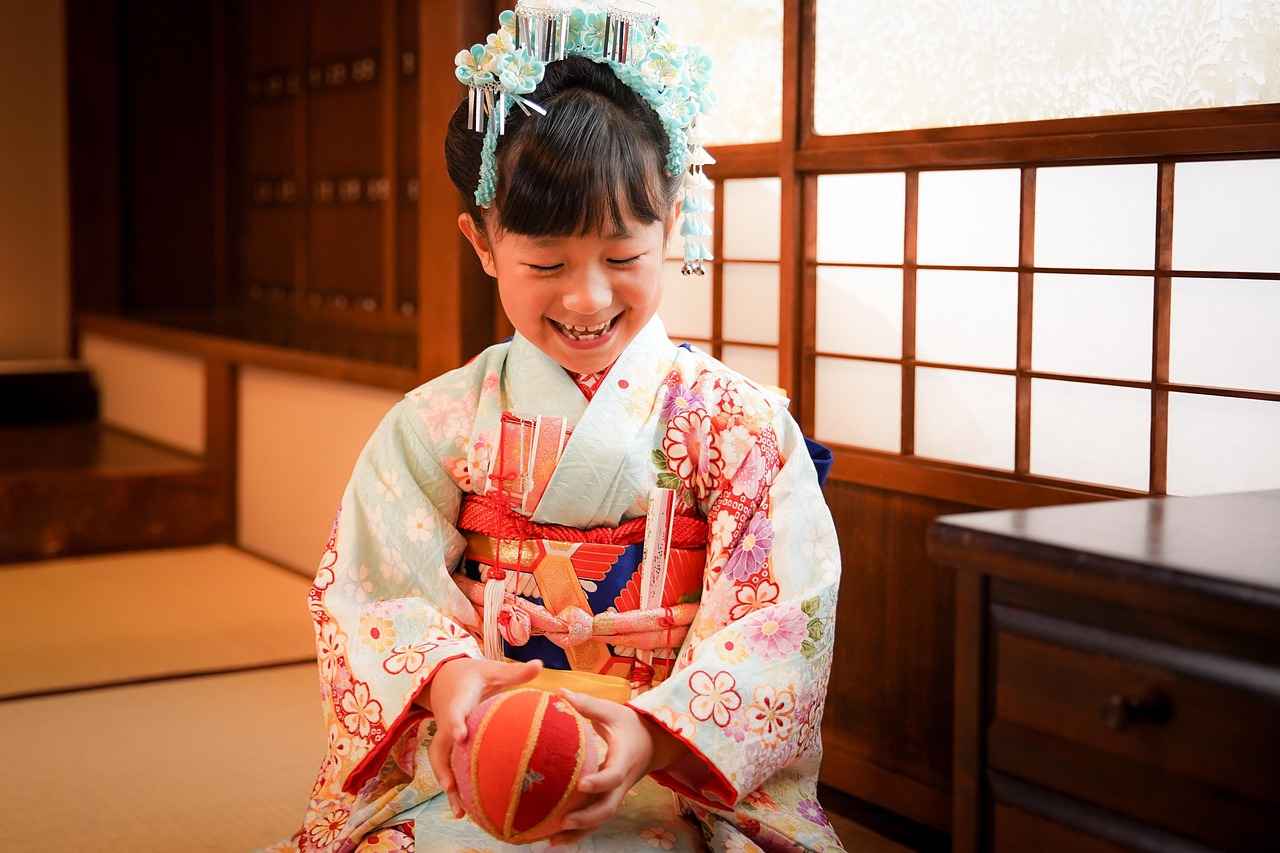
Kimono Care and Maintenance
is essential for preserving the beauty and longevity of these exquisite garments. Kimonos are not just clothing; they are a reflection of Japanese culture and artistry. Proper care ensures that these traditional garments can be enjoyed for generations to come. This section provides comprehensive tips on cleaning, storage, and handling of kimonos.
Kimonos require special attention when it comes to cleaning. Here are some recommended methods:
- Hand Washing: Use cold water and a mild detergent specifically designed for delicate fabrics. Always wash gently to prevent damage.
- Professional Cleaning: For intricate designs or valuable pieces, consider using a professional kimono cleaning service. They have the expertise to handle delicate fabrics without causing harm.
- Spot Cleaning: For minor stains, use a damp cloth to gently blot the area. Avoid rubbing, as this can damage the fabric.
Proper storage is crucial to maintaining the quality of kimonos. Follow these guidelines:
- Use a Kimono Bag: Store your kimono in a breathable cotton bag to protect it from dust and light.
- Hang or Fold: If hanging, use padded hangers to maintain the shape. If folding, do so carefully to avoid creases.
- Avoid Direct Sunlight: Keep kimonos away from direct sunlight to prevent fading and deterioration of colors.
When wearing or handling kimonos, keep these tips in mind:
- Clean Hands: Always ensure your hands are clean and dry to avoid transferring oils or dirt onto the fabric.
- Avoid Jewelry: Remove any jewelry that could snag or catch on the fabric while putting on or taking off the kimono.
- Be Gentle: Treat the garment with care, especially when tying the obi (belt) or adjusting the sleeves.
By following these care and maintenance tips, you can ensure that your kimono remains a stunning representation of Japanese culture for years to come.
Cleaning Methods
Kimonos are exquisite garments that require careful handling and maintenance to preserve their beauty and longevity. As traditional Japanese attire, they are often made from delicate fabrics such as silk, which necessitates specific cleaning methods to avoid damage.
In this section, we will explore the best practices for cleaning kimonos, including hand washing and the use of professional cleaning services.
| Cleaning Method | Description | Pros | Cons |
|---|---|---|---|
| Hand Washing | Gently wash the kimono in cool water with mild detergent. | Preserves fabric quality; allows for careful attention to detail. | Time-consuming; requires knowledge of proper techniques. |
| Dry Cleaning | Take the kimono to a professional cleaner who specializes in delicate fabrics. | Expert handling; minimizes risk of damage. | Can be expensive; may not be available everywhere. |
Hand washing is often recommended for kimonos, especially those made from silk. To do this, fill a basin with cool water and add a small amount of mild detergent. Gently agitate the water to create suds, then submerge the kimono, ensuring it is fully saturated. Avoid scrubbing or twisting the fabric, as this can cause damage. Instead, let it soak for a few minutes before rinsing thoroughly with cool water.
If you’re unsure about cleaning your kimono yourself, consider using professional cleaning services. These experts are trained to handle delicate garments and can ensure that your kimono is cleaned safely and effectively. They often use specialized techniques and solvents that are gentle on the fabric, helping to maintain its integrity.
In conclusion, whether you choose to hand wash your kimono or seek professional assistance, the key is to approach the cleaning process with care and attention to detail. By following these recommended practices, you can help preserve the beauty and cultural significance of this iconic garment for years to come.
Storage Tips
Storing kimonos properly is crucial for preserving their beauty and longevity. Improper storage can lead to wrinkles, fabric deterioration, and loss of color vibrancy. Here are some essential guidelines to ensure your kimonos remain in excellent condition.
- Choose the Right Location: Store kimonos in a cool, dry place away from direct sunlight. Sunlight can fade the colors and weaken the fabric over time.
- Use Appropriate Storage Materials: Opt for breathable cotton or silk garment bags instead of plastic. Plastic can trap moisture and lead to mold growth.
- Fold with Care: When folding kimonos, use acid-free tissue paper to cushion the folds. This helps prevent creasing and maintains the fabric’s integrity.
- Avoid Hanging: While it may seem convenient, hanging kimonos can stretch the fabric and distort their shape. Folding is generally a safer option.
- Regularly Check for Pests: Inspect stored kimonos periodically for signs of pests such as moths. Using lavender sachets can help deter insects.
- Keep Away from Moisture: Use silica gel packets in storage boxes to absorb excess moisture, which can cause mildew and damage the fabric.
- Label Storage Boxes: If you have multiple kimonos, label each box to easily identify the contents without having to open each one.
By following these simple yet effective storage tips, you can ensure that your kimonos remain in pristine condition for years to come. Proper storage not only protects the fabric but also honors the cultural significance of this beautiful garment.

The Cultural Significance of Kimonos
Kimonos are not merely garments; they are profound representations of Japanese culture and tradition. This section delves into the multifaceted roles that kimonos play in various aspects of Japanese life, including ceremonies, festivals, and everyday wear.
Historically, kimonos have been worn during significant life events, such as weddings, coming-of-age ceremonies, and funerals. Each occasion calls for specific styles and colors, reflecting the emotional tone of the event. For instance, the shiro-muku (white kimono) is traditionally worn by brides, symbolizing purity, while the kuro-tomesode, a formal black kimono, is often donned at weddings by married women.
During festivals, kimonos serve as vibrant expressions of cultural heritage. Events like Hanami (cherry blossom viewing) and Obon (a festival honoring deceased ancestors) see participants adorned in colorful kimonos, enhancing the festive atmosphere. The yukata, a casual summer kimono made from cotton, is especially popular during summer festivals, allowing wearers to stay comfortable while celebrating.
In everyday life, kimonos have adapted to modern trends while maintaining their traditional essence. Many people now wear kimonos for formal occasions or cultural events, while casual versions are becoming more popular for loungewear or fashion statements. This evolution reflects a blend of tradition and contemporary style, showcasing the versatility of kimonos in the modern world.
In conclusion, the cultural significance of kimonos extends beyond their aesthetic appeal. They are woven into the fabric of Japanese society, representing history, identity, and a deep connection to cultural practices. Understanding their role in ceremonies, festivals, and daily life enriches our appreciation of this iconic garment.
Kimonos in Ceremonies
Kimonos hold a special place in Japanese culture, especially during important ceremonies. These beautiful garments are not only a fashion statement but also a reflection of the rich traditions and values of Japan.
During traditional Japanese ceremonies, kimonos are worn to symbolize respect, dignity, and the deep connection to cultural heritage. One of the most significant occasions where kimonos are essential is the tea ceremony. This ritual emphasizes harmony, respect, purity, and tranquility. The choice of kimono can vary based on the season and the formality of the event, with intricate designs that often reflect nature, such as blossoms or seasonal motifs.
Weddings are another key moment where kimonos play a vital role. The bride typically wears a shiromuku, a pure white kimono that symbolizes purity and the beginning of a new life. The groom often wears a montsuki, a formal black kimono adorned with family crests. This attire not only enhances the beauty of the ceremony but also signifies the couple’s commitment to honoring their heritage.
Furthermore, during festivals, kimonos are donned to celebrate community and cultural identity. These occasions allow individuals to express their personal style while embracing traditional aesthetics. The vibrant colors and patterns of kimonos worn during festivals create a lively atmosphere, showcasing the diversity and creativity inherent in Japanese culture.
| Occasion | Kimono Type | Symbolism |
|---|---|---|
| Tea Ceremony | Furisode | Elegance and youth |
| Wedding | Shiromuku | Purity and new beginnings |
| Festivals | Yukata | Celebration and joy |
In conclusion, kimonos are integral to various ceremonies in Japan, serving not only as traditional attire but also as a representation of cultural values. Their presence in events such as tea ceremonies and weddings highlights their importance in maintaining and celebrating Japanese heritage.
Festivals and Celebrations
In Japan, kimonos are not just garments; they are vibrant expressions of culture and identity, especially during festivals and community celebrations. These occasions provide a unique opportunity for individuals to don traditional attire, showcasing the beauty and intricacy of kimonos while honoring their heritage.
During various Japanese festivals, such as Hanami (cherry blossom viewing) and Tanabata (Star Festival), kimonos play a crucial role in the festivities. Participants often wear colorful kimonos adorned with seasonal motifs, reflecting the spirit and themes of the celebration. The choice of kimono can signify personal stories, family history, or even aspirations, making each outfit a unique narrative.
- Hanami: During this springtime festival, families and friends gather under blooming cherry trees. Women often wear floral-patterned kimonos that mirror the beauty of the blossoms.
- Tanabata: Celebrated in July, this festival involves colorful decorations and wishes written on strips of paper. Kimonos worn during Tanabata often feature vibrant colors and celestial motifs.
- Obon: A time to honor ancestors, many people wear kimonos to participate in traditional dances and ceremonies. The yukata, a casual summer kimono, is particularly popular during this festival.
Moreover, kimonos are integral to Shinto and Buddhist rituals, where they signify respect and formality. The fabric, colors, and patterns chosen for these occasions are often steeped in symbolism, enhancing the spiritual significance of the events.
In conclusion, the role of kimonos in Japanese festivals and celebrations transcends mere fashion. They serve as a bridge connecting individuals to their cultural roots and community, allowing for a shared experience of joy and remembrance. By wearing kimonos, participants not only celebrate their heritage but also contribute to the living tapestry of Japanese culture.
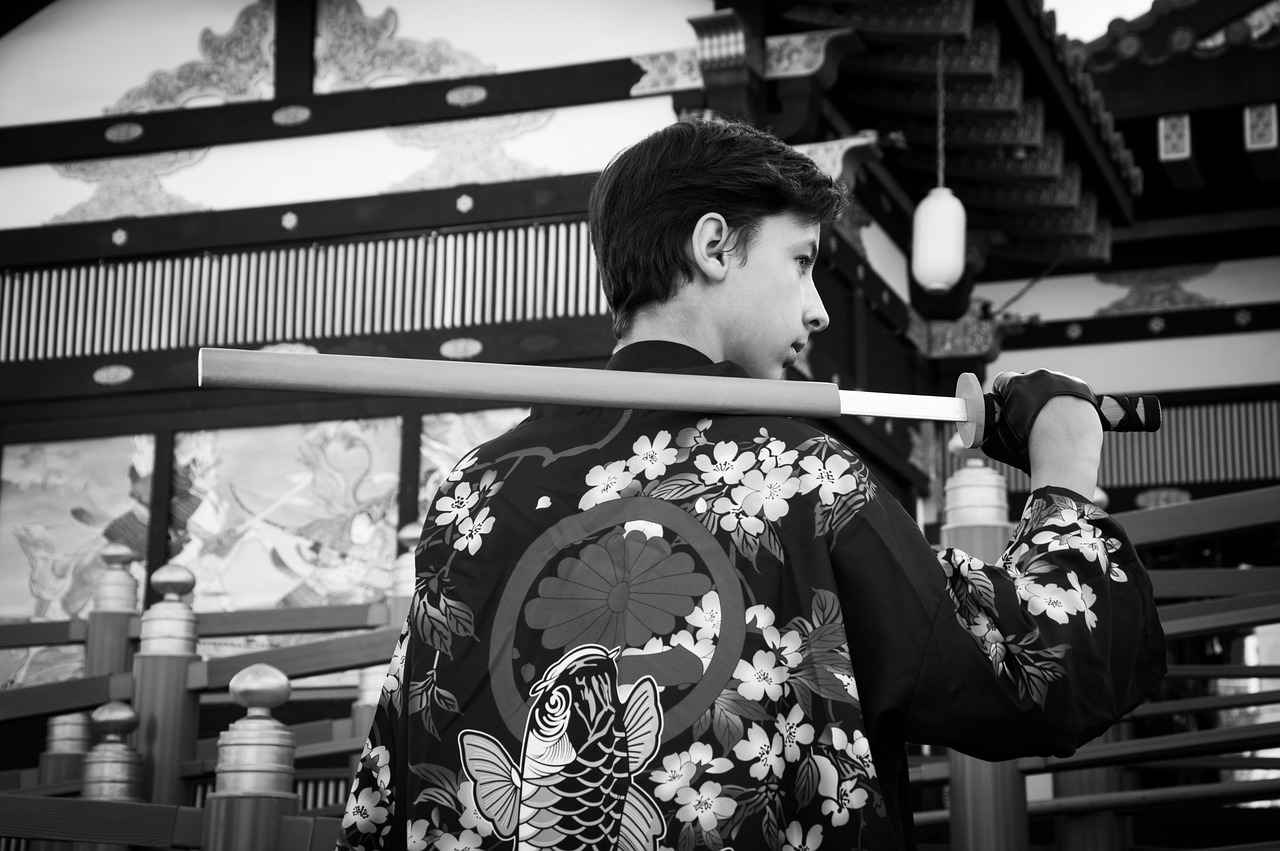
Conclusion: Embracing the Kimono Culture
Understanding the history, types, and significance of kimonos is essential for anyone looking to appreciate this traditional garment fully. The kimono is not merely clothing; it represents a profound connection to Japan’s rich heritage and artistry.
By exploring the various styles and their historical backgrounds, individuals can gain insight into the cultural narratives that kimonos embody. Each kimono tells a story, often reflecting the wearer’s personal journey, societal status, or the changing seasons. This connection to nature and tradition is what makes the kimono a unique and cherished garment.
Moreover, the act of wearing a kimono can foster a deeper appreciation for Japanese culture. Engaging with kimono culture allows individuals to participate in a long-standing tradition that transcends generations. Whether it is through attending a tea ceremony, participating in a festival, or simply wearing a kimono for a special occasion, each experience offers a glimpse into the artistry and craftsmanship that define this elegant attire.
As we continue to embrace the kimono culture, it is vital to respect and honor its traditions while also allowing for modern adaptations. This balance ensures that the kimono remains relevant in contemporary society, bridging the gap between past and present.
In conclusion, immersing oneself in the world of kimonos is not just about wearing a beautiful garment; it is about connecting with a rich cultural tapestry that celebrates Japanese identity and artistry. By understanding and appreciating kimonos, we contribute to the preservation of this remarkable tradition for future generations.
Frequently Asked Questions
- What is the significance of wearing a kimono?
Wearing a kimono is not just about fashion; it’s a deep-rooted expression of Japanese culture and tradition. Kimonos are often worn during significant events like weddings and festivals, symbolizing respect and appreciation for heritage.
- How do I choose the right kimono for an occasion?
Choosing the right kimono depends on the event and its formality. For formal occasions, opt for styles like the furisode or tomesode, while casual settings are perfect for a yukata. Always consider the season and the specific customs associated with the event.
- Can I wear a kimono if I’m not Japanese?
Absolutely! Kimonos can be enjoyed by anyone who appreciates their beauty and cultural significance. Just be mindful of the context in which you wear one, respecting the traditions and customs that come with it.
- How should I care for my kimono?
Caring for a kimono involves delicate handling. It’s best to avoid machine washing; instead, opt for hand washing or professional cleaning to maintain its quality. Additionally, store it properly to prevent wrinkles and fabric damage.
- Are there different types of kimono fabrics?
Yes, kimonos can be made from various fabrics, with silk being the most traditional. Cotton and synthetic materials are also common, especially for casual wear like yukatas. Each fabric has its own unique properties and uses.
